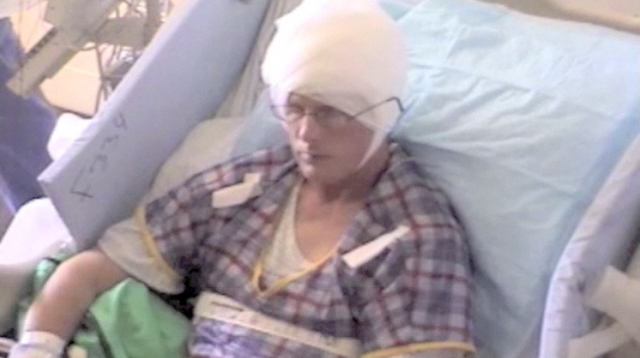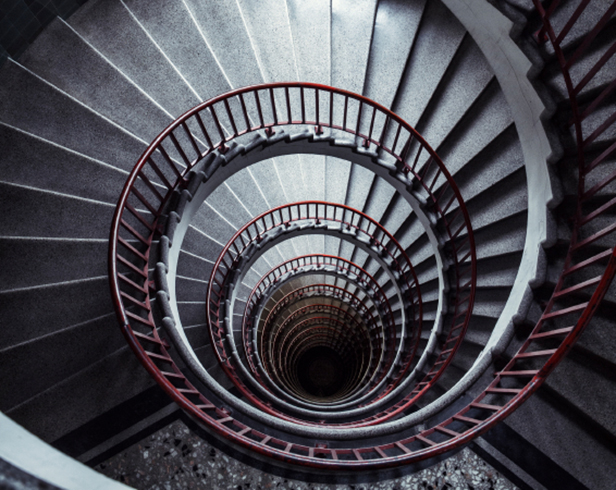Inside a Brain Circuit, the Will to Press On

One epilepsy patient reported a flushing in his chest and described a feeling of determinedness, like getting ready to drive through a storm. A second reported similar feelings, a response scientists involved in the study called “the will to persevere.” Both patients were reacting to an electric current delivered through an electrode implanted in the brain — put there to try to find the source of their seizures — which happened to stimulate one of the key nodes of a brain circuit known as the “salience network.”
In a rare study involving direct brain stimulation, Michael Greicius, a neurologist at Stanford University, and collaborators say they have uncovered direct evidence that a brain region known as the anterior midcingulate cortex and its surrounding network play a central role in motivation and a readiness to act. The theory had been based on indirect data — until now. “It was a fortuitous opportunity, providing a rare piece of data that we can’t get from any other setting,” Greicius said. “It’s nice to have a human lend this first-person insight into what it feels like to have your salience network stimulated.”
The new findings, published today in the journal Neuron, raise tantalizing questions about how differences in the network from one individual to the next contribute to differences in our ability to overcome challenges and cope with stress. Related research is under way to investigate how the network contributes to neurological and psychiatric disorders, including dementia and schizophrenia, which could provide insight into its role in attention and our sense of motivation.
First described by Greicius and collaborator William Seeley in 2007, the salience network is thought to be central in prepping the brain for action, such as when a driver must respond to someone darting across the road or a student readies herself for a pop quiz. An object or event is salient if it is significant to an individual. The signals can come from inside the body, such as pain or hunger, or outside, such as the sound of a distant siren while driving in traffic.
“Our brain is constantly bombarded by sensory information, and we have to score all that information in terms of how personally relevant it is for guiding our behavior,” said Seeley, a neurologist at the University of California, San Francisco, who was not involved in the new study. “The more salient something is, the more it captures our drive system, which directs behavior.” A far-off siren, for example, might do little to change a driver’s course, but one a few cars back would likely goad the driver to pull over.
The Neuron study isn’t the first to produce an emotional response by stimulating the brain. Earlier this year, scientists triggered bouts of crying in someone with epilepsy by stimulating another part of the brain. But it is the first to stimulate this part of the anterior cingulate, and the first to map out the patient’s brain network before the procedure.
Seeley said he was struck by the patients’ response. “They have a sense of the need to act, the need to endure,” he said. “The language the patients use to describe their personal experience really resonated with what I think that structure does and what the network as a whole does: to try to detect and respond to salient challenges.”

A Novel Network
As a medical student in 1999, Seeley was struck by how patients with a specific type of frontotemporal dementia — a form of dementia with somewhat different symptoms than Alzheimer’s disease — often lost their drive to engage in favorite hobbies or to perform routine tasks. In a sense, what they experienced was the opposite of what Greicius’ epilepsy patients felt when their brains were stimulated.
The part of the brain most heavily affected in this disorder is the frontoinsular cortex, a region buried deep in the brain that is linked to both emotion and bodily sensations, such as the heart racing or stomach churning. Given his patients’ symptoms, Seeley suspected that the region anchored an important network in the brain. In 2007, Seeley and his colleagues used functional brain imaging to map out the brain areas connected to this region in healthy people. They used an approach called resting state analysis or intrinsic connectivity, which monitors brain activity as participants daydream, doing no particular task. Looking for brain areas with correlated activity, the researchers were able to map out networks composed of functionally linked brain regions.
The study, published in the Journal of Neuroscience, defined a network similar to the one that deteriorates in frontotemporal dementia, including the anterior cingulate and the frontoinsular cortex. Previous research had shown that these regions often become active together under a variety of conditions, including pain, thirst, embarrassment, and attempting mental challenges. “All of them have some form of what we call salience,” Seeley said.
Individual regions within the network had been the subject of extensive research — the insula had been linked to emotional processing, and the anterior cingulate to cognitive control. But “the label of the salience network was a novel concept,” said Erno Hermans, a neuroscientist at the Donders Institute for Brain, Cognition and Behaviour in the Netherlands. “It identifies it as a separate system, independent from other systems in the brain.”
Examining that network activity as a whole, rather than as individual regions, helps researchers discern the brain’s complex patterns. “If you have to think about tiny regions of the brain all doing something different, it’s very hard to make sense of how activity fits together globally,” said David Sharp, a neurologist at the National Institute for Health Research in London.
At least part of the salience network’s role seems to be linked to something very basic: the fight or flight response. That response — an accelerated heart rate, dilated pupils and rising blood pressure, readying the body for action — may be orchestrated by the salience network. A 2011 study published in Science found that people who reported being the most scared by a horror movie showed the greatest boost to the network while watching it. And scientists could impede the effect with drugs known as beta-blockers, which block part of the body’s anxiety response and are commonly prescribed for high blood pressure and stage fright.
“I think it comes on line anytime there is a challenge to be met and allows the brain to marshal the body’s resources,” said Greicius. The fight or flight response would be an extreme example, “but low-level challenges still require marshaling of those physiologic resources,” he said.
Disrupted Circuits
When a mouse’s food reward is moved around a maze, some mice persevere for hours, while others quickly resign themselves to hunger. The same is true for people — some, like Aron Ralston, who in 2003 cut off part of his arm after being pinned by a boulder, can overcome seemingly insurmountable obstacles.
Scientists don’t yet know the exact role the salience network plays in perseverance, but they do know that disrupting the network can have a profound effect. Rodents with damage to their version of the anterior cingulate give up more easily than others when trying to find food. And deterioration in the salience networks in frontotemporal dementia has been linked to lack of drive.
Too much activity in the salience network can also be problematic. Seeley and Greicius’s original study found that the people who reported the most anxiety before they entered the brain scanner also showed the strongest network connections; and hyperconnectivity in the network has been linked to autism.
Network Confusion
One challenge in studying brain networks is that they can be defined differently by different groups. Some people consider the salience network to be the same as another network, called the cingulo-opercular network — the new Neuron paper, for example, refers to them interchangeably. But others said they are two different networks with different functions, set closely together in the brain. “They are really close together, so it’s easy to understand that they are anatomically confused,” said Steven Petersen, a neuroscientist at Washington University in Saint Louis who studies the cingulo-opercular network. “It’s a ubiquitous problem in functional anatomy writ large.”
Indeed, parts of the network light up when people with schizophrenia experience hallucinations. Scientists theorize that paying too much attention to one’s thoughts may give them undue significance. “These disorders might be partially understood as conditions in which an excessive amount of salience is attributed to situations or stimuli that don’t merit that much attention,” Greicius said.
The salience network is only one of multiple networks that have been identified using functional brain imaging. Greicius, Seeley and others are starting to find that different networks may be implicated in different diseases. A specific variant of frontotemporal dementia is linked to damage to the salience network, and Alzheimer’s disease may be linked to problems with the default mode network, which is most active when someone is internally focused, remembering the past or planning for the future.
In healthy people, those two networks appear to be tightly coupled. The default network is active when a person daydreams — but when something outside, such as an ambulance siren, pierces that sense of reflection, the salience network takes over. “It’s activated when you have to get rid of that internal focus and figure out what’s happening around you,” said Sharp. “To understand what’s going on, we need to think about how they work together.”
Sharp’s research shows that the link deteriorates when the salience network is damaged. People with traumatic brain injury in that network, for example, have problems switching from one network to the other. Scientists are now starting to study that shift in detail. “I am very interested in how the brain manages to switch between the networks, how they suppress each other and how the ability to switch is related to psychopathology,” Hermans said.
Seeley and Greicius also hope to further dissect the fine points of the salience network. Seeley plans to study damage in people with frontotemporal dementia to better understand the functions of specific parts of the network. The research could also aid in the development of new treatments — for example, the strength of network could be used to measure how well patients respond to drugs. Greicius aims to look at how genetic variations affect network function. He said he hopes that “the compelling, first-person accounts” by the epilepsy patients in his latest study will “encourage researchers to think more about how the salience network may relate to neuropsychiatric disorders.”
This article was reprinted on Wired.com.



